The course re-opened in 1997 after Dye and associate Tim Liddy was completed. Dye called the course “The best piece of ground I’ve ever seen.” The total property for the course contains 238 acres. It is surrounded by trees and along with The Garrison comprises the Fort Golf Course. One thing that many people will love to know is that the course will never be surrounded by houses due the state owning the surrounding land. This is fortuitous as developers would love to get their hands on the grounds of one of the fastest growing areas of Indianapolis and one of the top golf courses in the state.
The land that holds the course has some of the most extreme undulations and ravines that one will find in Indiana on a golf course. Dye, in his usual genius manner took advantage of the severe terrain and routed nine holes over it at different points in the track. The rest of the course features fairly level ground and lacks the excitement of the other holes, but Dye used traditional strategic concepts and created some difficult holes. In many regards it reminds me of the land used for Eagle Creek almost directly across town on 56th street.
Challenge is never a question on the course, but Dye and Liddy implemented design techniques that help to alleviate the concerns of the high handicapper to an extent. With the drastic elevation changes come several mandatory carries off the tee and some severe sidehill lies throughout the round. They placed several flat-bottomed bunkers at the base of the slopes to prevent balls from being lost and to provide the more challenged golfer and opportunity to recover. Another design element in full view is that almost all of the greens at The Fort have open entrances with hazards to the side or protecting an angled green. This is a tendency that Dye has exhibited throughout his career.
In his entire career, Pete Dye has been known to build some devious and fiendish greens. The greens at the Fort may seem a little mild in comparison as the challenge is presented to the player between the tee and the final destination. But one should not fall asleep at the wheel and think the greens will be easy victims. Many of them feature slight contours including bumps, ridges and spines; not to mention a few with some dastardly slope. Though they are not the most feared in the Dye portfolio, the group of putting surfaces are still a challenge to all that play them.
Holes of note:
Hole 2 – 323 yards - Quickly the player is introduced the difficult terrain on the second hole as the tee shot must clear a ravine and go to a fairway that noticeably runs from right to left with the green out of view on the short par four. The slope of the green may be the most severe on the course with two deep pits on the left side. Reminds me of the tenth at The Trophy Club with trees.
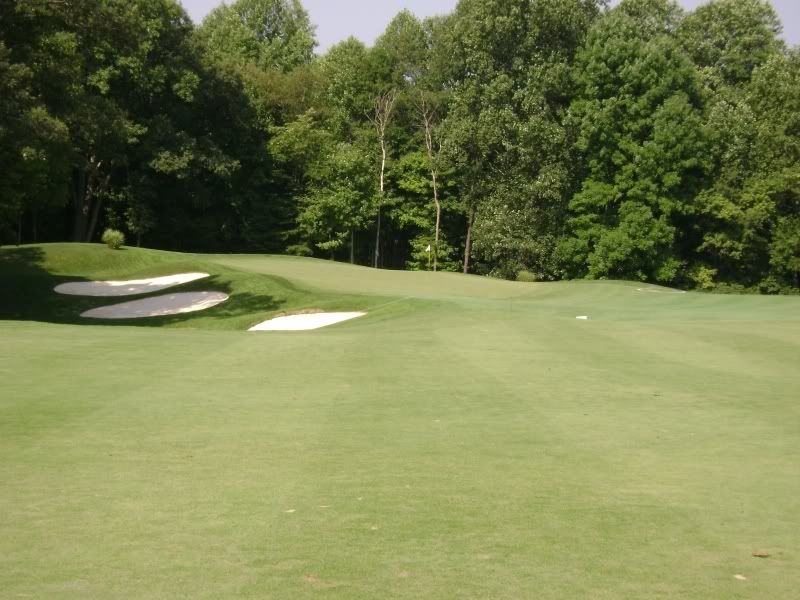
Hole 4 – 479 yards - The fourth features a couple of hills bleeding into the sides of the hole and several ups and downs. The last slope feeds into the green. Shots the run along the right side of the hole will have an awkward lie and the longest of hitters may be forced with a blind shot into the green from a depression at just over three hundred yards out from the tee. This is just another tool by Dye to make the course harder for the better players and to even the odds a little for the higher handicap. The best par four on the course.
From the tee
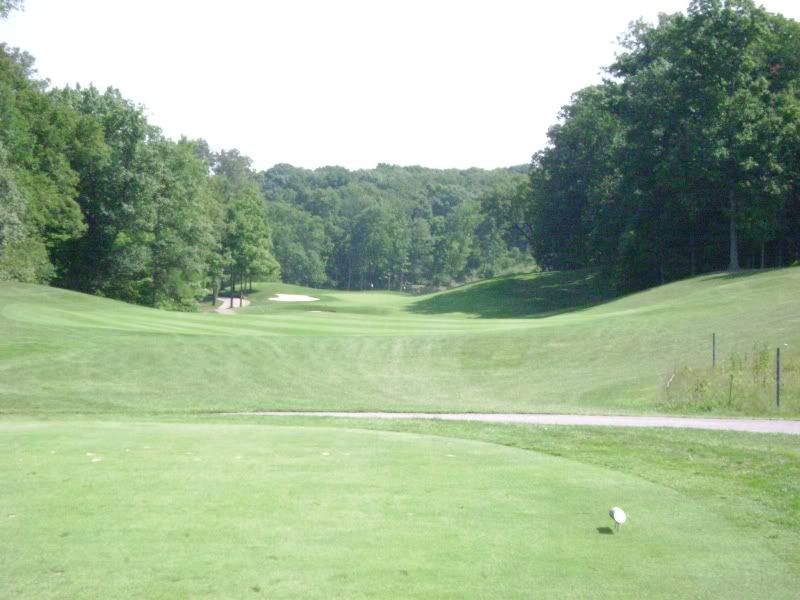
From behind the hole
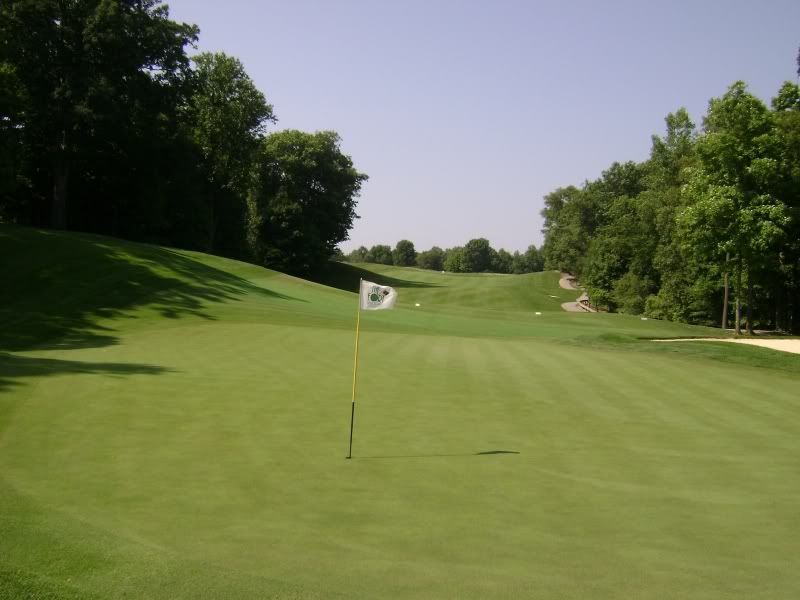
Hole 5 – 170 yards - A dropshot par three is a beautiful site and a rare bird in Indiana. It would be hard to imagine another that could be better than the one at The Fort. At only 170 yards and playing almost thirty yards shorter with the prevailing breeze, the hole becomes very difficult in trying to stay below the hole while also avoiding the deep revetted bunker to the right side of the putting surface.
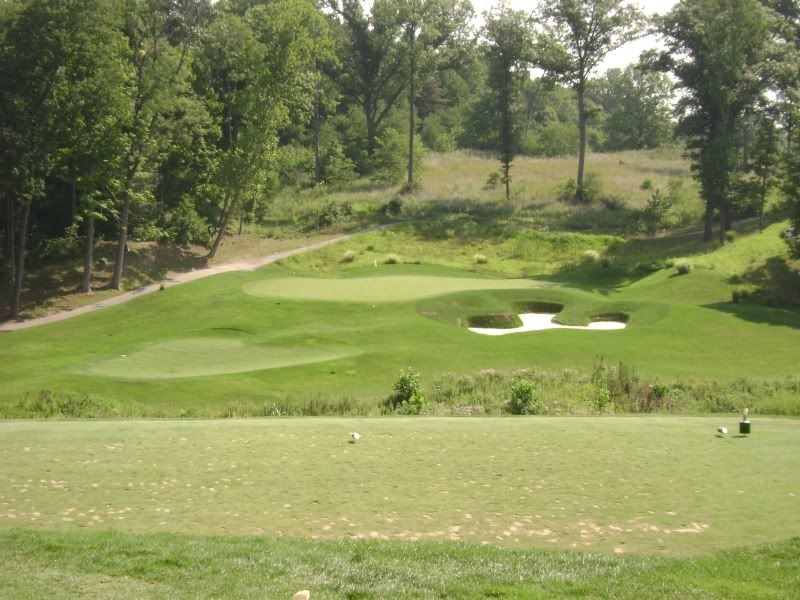
Hole 6 – 511 yards - This is followed by another roller coaster hole with a forced carry off the tee. The hole continues to climb up the hill and run from left to right. The approach to the hole is defended by a trio of bunkers set at a diagonal that forces the player to hit a lay up or approach to the green with some skill. The player going out to the right will have an open angle into the green and have a fine chance to save par or even make birdie with a skillful pitch into the target.
From the tee
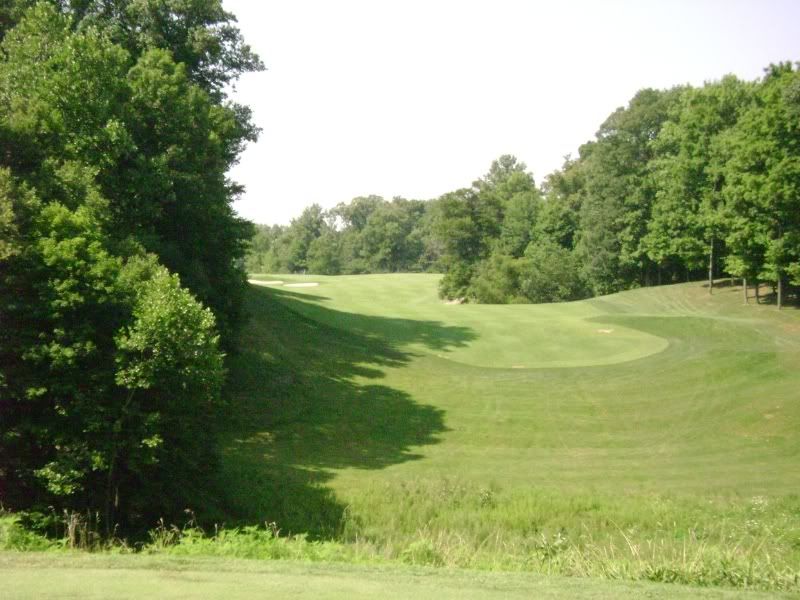
The approach from the right
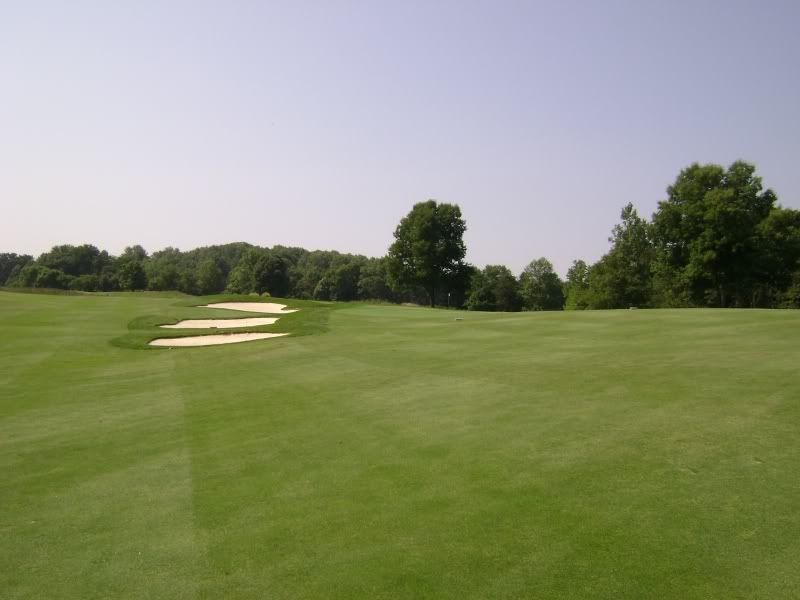
Hole 10 – 311 yards - After the turn, the rough terrain picks back up with the tenth on a hole that should just be called the elevator because it only goes down from the tee. The green is placed on a plateau with a cluster of bunkers protecting the left side. This is just another in the fine group of short par fours that Dye and Liddy provided at the Fort. In a way it reminds me of the 17th at Crystal Downs only in reverse.
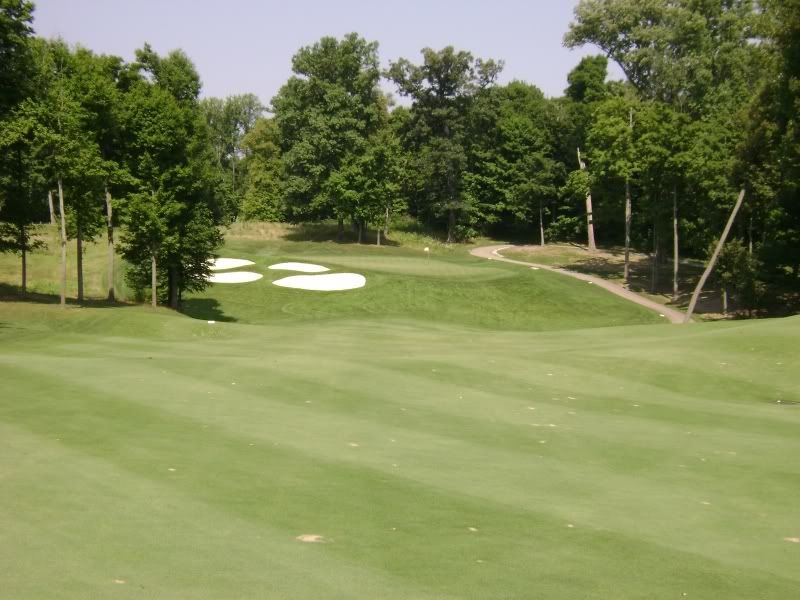
Hole 11 – 547 yards - This is the type of hole that not only shows Dye’s genius but what separates the armchair architects from the real thing. The hole runs from left to right and up the hill to a plateau that hides the green from the player on the tee, leaving a doubt in their mind as to the green location. From the landing zone for the drive the green begins to peak out to the left but appears to be a thousand yards in the distance. The green, like many others is accommodating to a long approach with an open entrance and allows some leniency in the surrounding hazards. The toughest par five I have ever played under 600 yards.
The tee
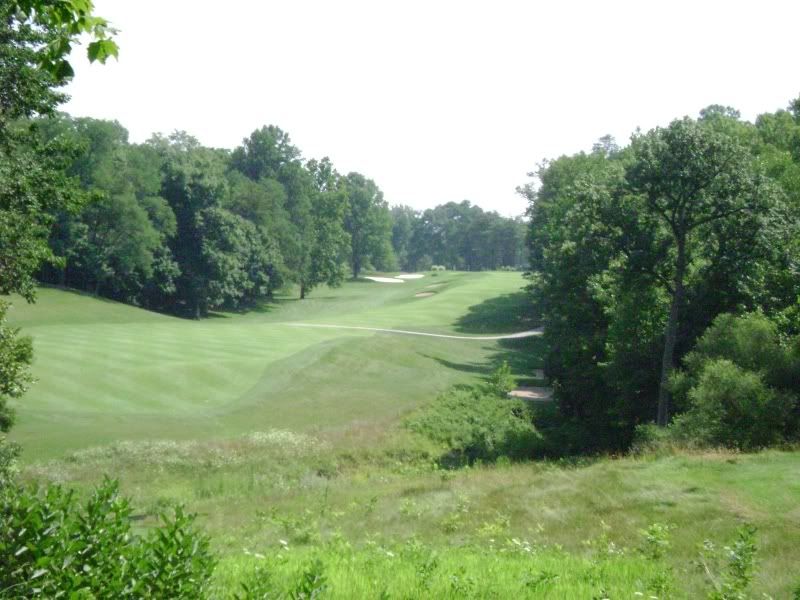
The second shot with the green to the left of the hill

The approach
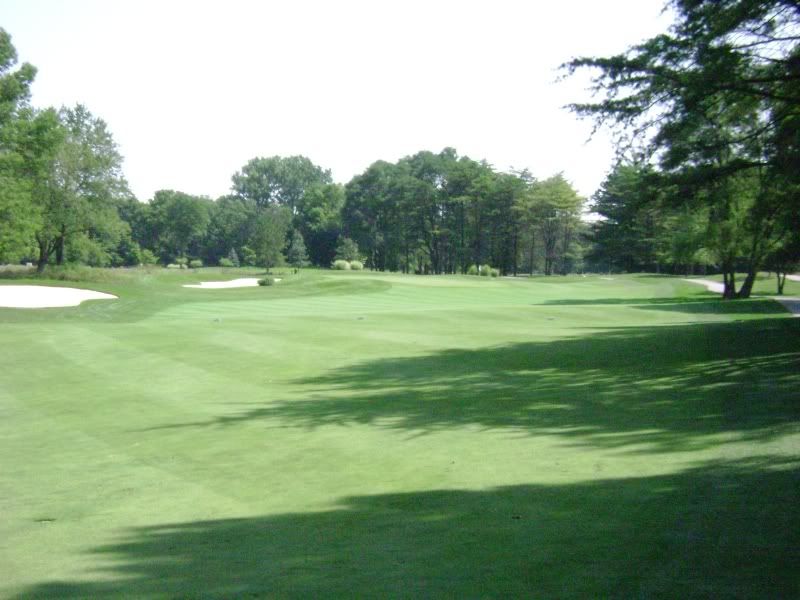
Hole 15 – 471 yards - A tough long par four with a great green complex protected on the right by bunkers and a run off to the left for shots just a bit off line. The approach is semi-blind with the green perched within a bowl.
From behind the green

Hole 16 – 582 yards – Long par five with some great bunkers from a strategic standpoint and a shoulder short of the green that made me just think of Patrick Mucci.
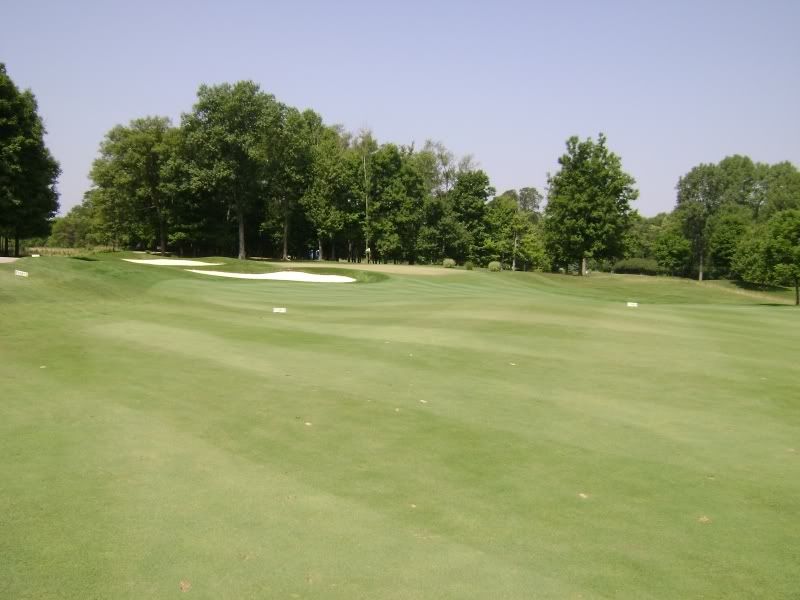
Hole 18 – 474 yards – Dye found the last piece of undulating ground to layout the eighteenth across. Like the second, the hole runs over a ravine and then uphill while going from right to left towards the green that is out of view. Short of the green is another depression and then a steep slope up to the putting surface. The difference is that this hole is almost 475 yards from the tips.
From the tee
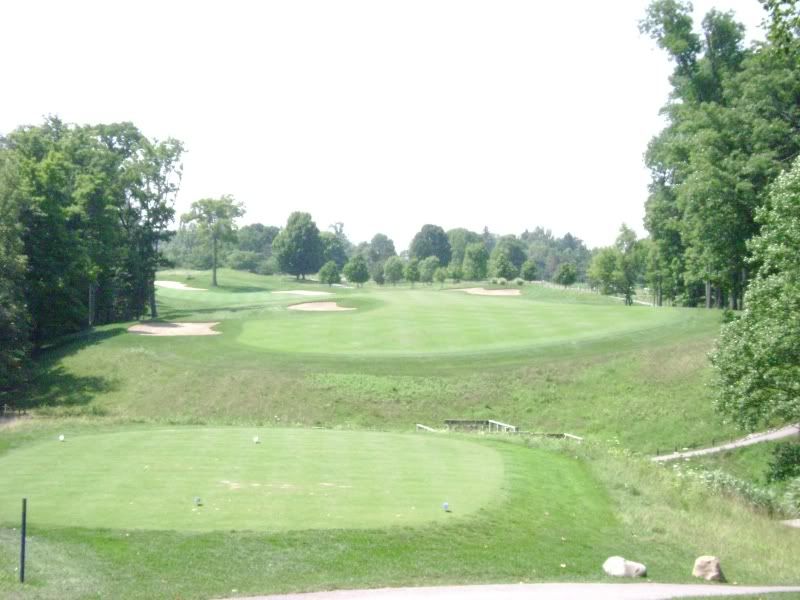
Approach from right
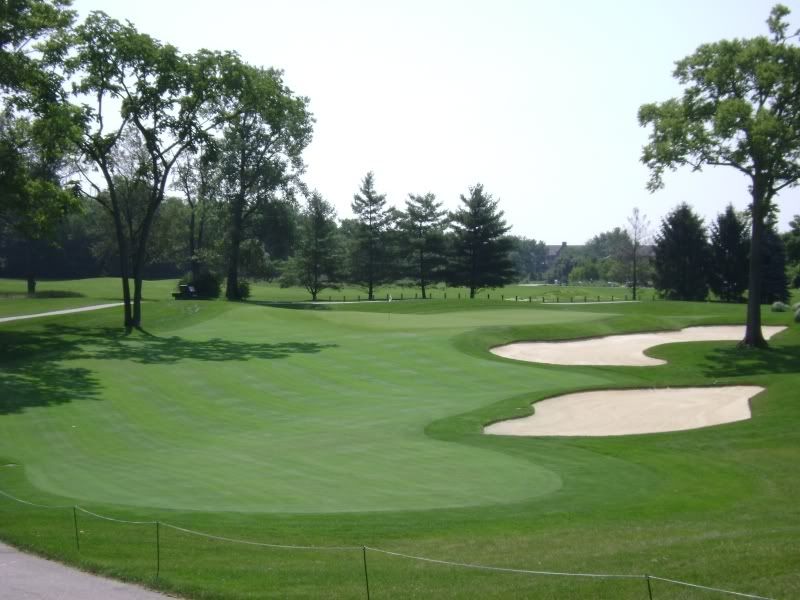
From behind you see the contours in the green
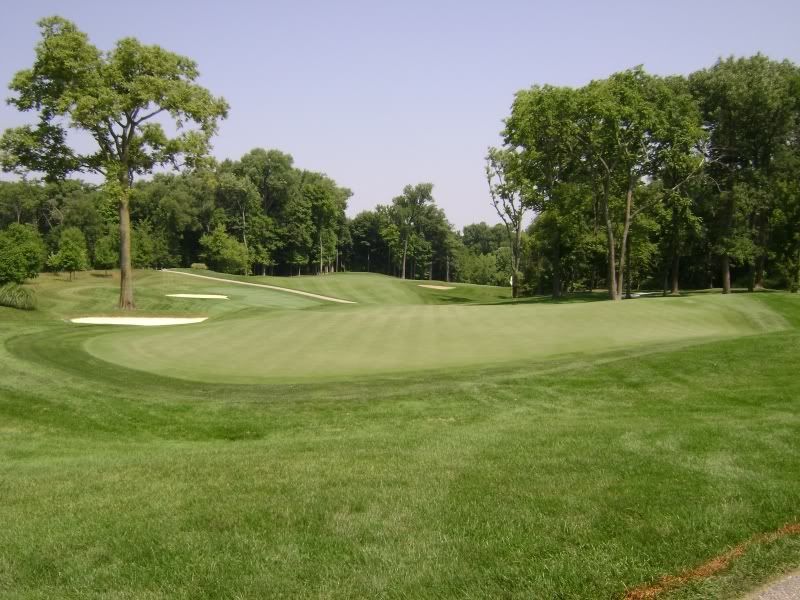
Perhaps the largest criticism of the course is that the holes that run over the flatter terrain are very tame in comparison and in many instances have an air of similarity to them. The holes that run over the extreme terrain are excellent in almost every regard. If nothing else the course at the Fort should eliminate any stereotype that exists about Indiana golf courses just being flat pieces of old farmland.